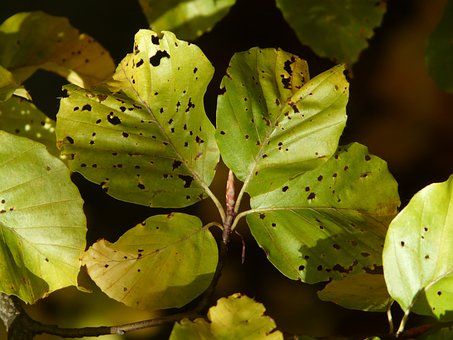Beech Leaf Disease – What is Beech Leaf Disease?
Beech leaf disease is a new, lethal disease that attacks beech trees. The nematode Litylenchus created by McCann is thought to cause this disease, which can eventually spread throughout the entire tree. If you’ve ever noticed your beech tree leaves curling or turning brown, you may be wondering if beech leaf disease is the cause.
How do you get rid of beech leaf disease?
Beech leaf disease is a potentially deadly disease that affects beech trees. This disease is relatively new to Connecticut and scientists do not yet fully understand it. However, there are steps residents of Connecticut can take to control the disease and save their beech trees. The information below comes from recent scientific findings and research and is intended to help people living in Connecticut take action.
To identify the disease, the first thing to do is look for dark bands of leaf tissue between the veins. These dark bands are the hallmark of beech leaf disease and can be difficult to spot if you are looking at the leaf from the ground or at an angle. However, if you hold the leaf up to the light, the darkened area is more visible.
Where is beech leaf disease?
Beech leaf disease is a rapidly expanding disease affecting beech trees. It first appeared in Ohio in 2012 and has spread quickly throughout the Northeast. As of July 2022, it had been found in 13 different counties in Ohio and five different states. It has also been detected in New York and Ontario. It is also present in every county in Connecticut except for Hartford. While the exact extent of the disease in each state is unknown, the DCR Forest Health Program is conducting survey efforts in beech forests to determine the extent of the disease.
Beech Leaf Disease is not easily controlled and can spread from tree to tree. The disease can be transported long distances on nursery stock and beech materials. Once it reaches a specific location, it can take several years before symptoms appear. However, some areas are more susceptible than others to the disease.
Why are my beech tree leaves curling?
Curled beech tree leaves are caused by several different factors, including aphids and pathogens. The first cause is insect activity, which is easily distinguishable from the second, which is a disease called beech leaf disease (BLD). Insect damage is usually lighter-colored, while pathogen damage is marked by darker bands. Beech is a natural tree that holds onto its leaves well into the winter.
This disease is caused by a fungus that lives on the bark of beech trees. The fungus causes large areas of decayed bark and eventually kills the tree. The disease often takes two or more years to manifest itself, but in some cases, it can appear as soon as a year or two after the tree is infected.
What is a beech canker?
Beech canker is a disease caused by a fungus known as phytophthora. It can cause severe damage to beech trees, affecting their bark. The disease is often detected by white spots in the bark. Typically, this disease is found in forests in eastern New York, New England, and Pennsylvania. It has also been reported in the Great Smoky Mountains National Park. It is an uncommon disease, but there are some steps that you can take to minimize your risk.
Symptoms of beech cankers include large cankers on the trunk and major roots of trees. The fungus enters through wounds and succulent roots. It produces reddish-brown sap and kills the affected branch. The fungus may also affect the tree’s roots, although this is uncommon. To combat the disease, you must treat your tree as soon as possible.
What does beech bark disease look like?
This disease can be difficult to control, but if you are proactive, you can minimize its impacts. The most effective way to fight the disease is to reduce the population of scale insects. These insects are the carriers of the fungi that cause beech bark disease. The scale insects have protective shells that make them resistant to insecticides, but you can suffocate them with multiple applications of dormant oil or by injecting the root zone with fungicide.
One of the main symptoms of beech bark disease is reduced mast. This makes it harder for animal species that depend on a hard mast to survive. Wild turkeys, bears, and deer are some of the animals that are affected. Fortunately, some beech trees are resistant to this disease.



